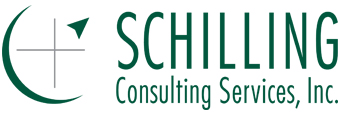Preparation is a key to a great Strategic Plan
Since many organizations have fiscal years that end somewhere between December and June, Fall through early Winter is a popular time of year for convening stakeholders to create or update a Strategic Plan. And, if you are considering engaging in Strategic Planning this Fall, now is the time to begin preparing. The preparation is critical and can take time. As a rule of thumb, I advise clients that as much as 60% of the work and time involved in developing a plan should be invested before the first formal meeting of the planning committee or team.
Information Fuels Strategy Thought needs to be given to the participants and the process they will follow. However, the bulk of this preparation needs to focus on information that will stimulate thinking, discussion, and insight about the desired future state of the organization and the changes needed to achieve it. The specific information varies by organization but should address three types of assessment:
- Industry Assessment: Includes issues, trends, and innovations or best practices. Issues typically relate to critical problems or challenges confronting organizations in your industry. This may include new regulations / requirements and resource constraints. Some of the trends in your industry may be in response to one or more issues.
- Market Assessment: Includes identification of the customer base and segments, community needs assessment, competitor analysis (if applicable), and relevant demographic characteristics and trends.
- Organization Assessment: Includes customer satisfaction/loyalty, employee satisfaction/engagement, stakeholder research, and key performance measure results (dashboards, scorecards). Also includes the results of the current plan, if there is one.
Time will be required to determine desired data and sources, collect it, and to identify key findings. It needs to be presented as information, not just data, in an organized format. Keep in mind that some of the information gathering may not require a large amount of time, but may need to take place over time. Good examples of this are some of the listening posts such as surveys, focus groups, or structured interviews used to gather input from various key stakeholders.
Catalyst for Seeing What Could Be There is a relationship between the scope and depth of information considered and the quality of strategic insight gained, so more information is better, to a point. It is acknowledged that larger organizations may be able to assemble and analyze more information than smaller ones. However the amount of information pursued can be scaled to the size of the organization. Even modest budgets, spent well, can be very effective. In truth, the scope of information may be as, or even more important than, quantity and depth. Great strategy is fed by the synthesis of a variety of information, so having information in all three assessment areas contributes greatly to helping leadership think about the future of the organization and identify needed change.
Time Well Spent With all the demands on our time, some may wonder if this wouldn’t be a place to cut back in the process and the time required for Strategic Planning. Could we make up for less preparation by ensuring we include good creative thinkers? Get them to “think outside the box?” Develop a range of scenarios? Probably not. In my experience, nothing can substitute for preparation and analysis. In fact, the time spent preparing information in these three areas will help with other aspects of your planning process:
- + The information will establish a common base of knowledge for all planning team members to draw on and then add to with their own perceptions and experiences.
- + Key trends and developments that are essential to consider in the planning process can be highlighted right from the beginning.
- + Stakeholders and planning committee members can spend less time with fundamental information and more time in layered analyses and in relating the different findings, formulating deeper insights.
- + The variety of information from the different assessments can contribute to more balanced participation among team members. This is because different people respond to, and are energized by, different kinds of information (facts vs. perceptions, quantitative vs. qualitative, etc.)
- + The convergence of all of this information at the same time enables the identification of important patterns and relationships among different sources of information.
- + Information from divergent sources and perspectives helps participants see the “big picture” and avoid a desired future state that is too narrowly focused on a single issue or insight, or too heavily influenced by one persons’ expertise or responsibilities.
It’s summer! Time spent well now will set the table for highly productive planning sessions later this year. If I can be of any help with the preparation phase or any aspect of your strategic planning process, contact me at your convenience.
Jeff

